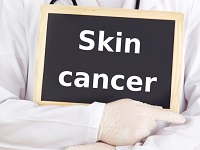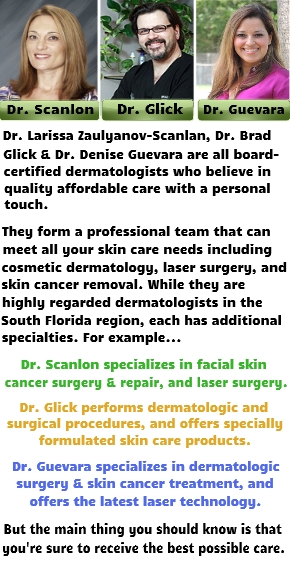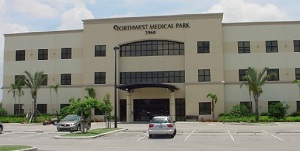 One of the most vital services that a Coral Springs dermatologist can provide is the diagnosis and treatment of skin cancer.
One of the most vital services that a Coral Springs dermatologist can provide is the diagnosis and treatment of skin cancer.
Of all the cancer types, none is more prevalent than skin cancer. According to skincancer.org, more than two million people in the U.S. are diagnosed with skin cancer annually.
The occurrence of skin cancer is a bit higher in men when compared to women, but not by a wide margin. In the remainder of this article, we will discuss the cause of skin cancer, types, symptoms, and cures. By having this understanding, you’ll be in a better position to get your most important questions answered when speaking with one of our dermatology consultants.
Causes of Skin Cancer
While it is extremely difficult to pinpoint the causes behind many other cancers that appear in the human body, the most common cause of skin cancer is ultraviolet radiation. And the source of this radiation is sunlight.
Of course, everyone is exposed to sunlight. But the biggest quandary is why two people could experience the same level of sun exposure and one may develop skin cancer and the other may not. So in addition to sunlight, other cancer causing factors include genetic make up and family medical history.
Types of Skin Cancer
There are three predominant types of skin cancers:
Basal Cell Carcinoma – This is the most common skin cancer, but it is also one of the mildest forms. We see quite a few cases of it in our dermatology practice here in Florida. It accounts for nearly 90% of all skin cancer cases. The cancer is associated with the basal cells of your skin’s epidermis layer. This cancer can appear on the face, lips, neck, back of hands, and ears. But there are also cases of it occurring on the back, arms, and legs.
The cancer will usually show up as a brownish, reddish or dark pinkish bump or small patch. It’s not likely to spread to other parts of the body, but could damage any tissue in the surrounding area. The cure rate for this type of cancer approaches 99% when caught early.
Squamous Cell Carcinoma – This skin cancer is the second most common type. While basal cells occupy the lower level of the skin’s epidermis layer, squamous cells can be found in the upper level. The cancer will appear as open sores, scaly patches, or wart-like growths. They may also crust or bleed. You could find them on all areas of the body.
Similar to Basil Cell Carcinoma, this cancer is not likely to spread to other body parts and the cure rate is very high if detected early.
Melanoma skin cancer – This type of skin cancer is the least common, but it is the deadliest. In 2013, there were about 76,000 reported cases.
Melanoma skin cancer is associated with melanin and melocytes, which not only control your skin’s pigmentation, but protect it from the damaging effects of the sun. Melanoma could appear as new mole-like growths, lesions, bumps, and dark patches that may show up anywhere on the body that has been exposed to sunlight. The coloring could be black, brownish, or reddish.
The overall survival rate for Melanoma skin cancer is about 91%, but that rate increases when it’s caught early.
How does a Coral Springs dermatologist treat skin cancer?
In order to determine if you have skin cancer, you should schedule an appointment with our Coral Springs dermatologist. The doctor will exam your skin for bumps, spots, markings, and unusual patches.
If anything looks unusual in size, color, or shape, he or she will have it biopsied. This will involve cutting away or shaving off a small part of the growth and sending it off to a laboratory for review.
Depending on the type of skin cancer and how far it has progressed, the dermatologist has several options:
Cut out the cancer – In this case, the small tumor is cut away from the skin along with a small amount of the normal tissue surrounding it. This could be done with a standard sharp instrument or using a needle-shaped electrode.
Shave away the cancer – If the cancer is in the very early stages, the dermatologist may simply shave it off of the upper layers of the skin.
Freeze away the cancer – In this case, a special instrument is employed to freeze the cancerous area and destroy it. This technique is call Cryosurgery.
Perform Moh’s surgery – This popular surgical technique has been around since the 1930’s. It was named after Frederic Mohs, who was a general surgeon.
The Moh’s technique is a microscopically controlled surgery. It involves the methodical and progressive removal of the skin cancer in stages. After each stage, the surgeon will closely examine the extracted tissue to determine where to remove the next section of tissue.
Moh’s surgery has proven to be especially effective when dealing with Basal Cell Carcinoma and Squamous Cell Carcinoma.
Employ chemotherapy and radiation – If the cancer spreads to the lymph nodes and other areas inside the body, then more aggressive procedures will be needed. In these instances, the doctor may recommend radiation therapy, chemotherapy, and other similar treatments.
To conclude, skin cancer is a very serious matter, especially for those of us who live in Coral Springs, FL and the greater South Florida region. So it’s important that you closely examine your skin periodically. Look for usual bumps, sores, or discolorations. If you spot anything unusual, give our dermatology practice a call so that we can diagnose whether it’s nothing to worry about or something that you and we will be happy that was caught early.


